Romania is one of Europe’s best-kept secrets and seems to be in the midst of a tourism resurgence.
This Eastern European country is captivating travellers from all over the globe with its stunning natural beauty, medieval charm, and a mystical history steeped in legend.
The country is known for numerous fortresses dotting the horizon, supposedly haunted medieval castles, and bewitching wooden monasteries.

Corvin Castle
Finally shedding the skin of communism and disposing itself of a bad reputation, Romania is ripe for a visit. Where else can you traverse a relatively unknown land, dipping into local folklore and history, all without breaking the bank?
But before diving headfirst into a country that will leave you wondering what you’ve been doing with your life up to this point, let’s talk about a few things that you’ll need to know before you visit this beautiful country.
Basic Information About Romania.
Romania is the 12th largest country in Europe by area, and the 7th most populous country in the European Union. Although it is currently a member of the European Union, it is not part of the Schengen Area.
But fear not! Travel requirements for entering Romania are fairly easy to obtain for most citizens from foreign countries. Make sure to check with your country’s embassy for up-to-date requirements and visa information.
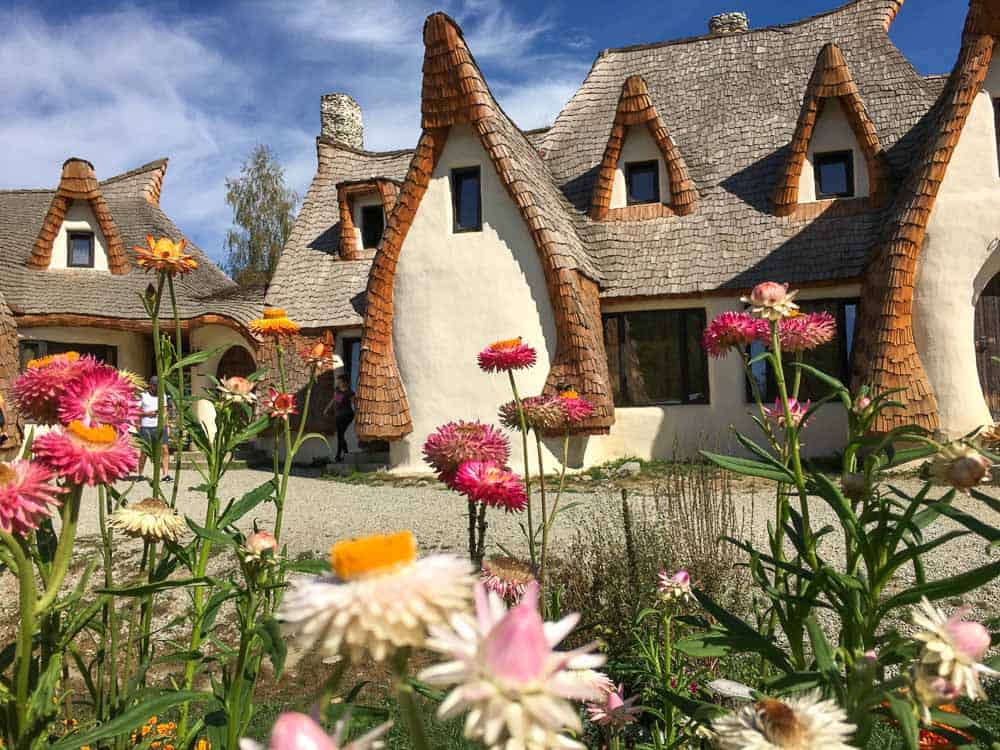
Castelul de Lut Valea Zânelor a off the beaten path destinations in the country.
Romanian´s Speak Romanian
It shouldn’t come as a shock to visitors that the main language spoken in Romania is Romanian. Although many of the population in larger cities speak English, it shouldn’t be assumed.
As you travel to some of the smaller villages and towns outside of the metropolitan areas of Bucharest, Cluj-Napoca, and Brasov, you might need to use more non-verbal forms of communication or have a handy translation-style app on your phone.
Or even more impressive, learn a few phrases in Romanian. Some of the best go-to phrases include “thank you,” “where is…” “and can you help me?”
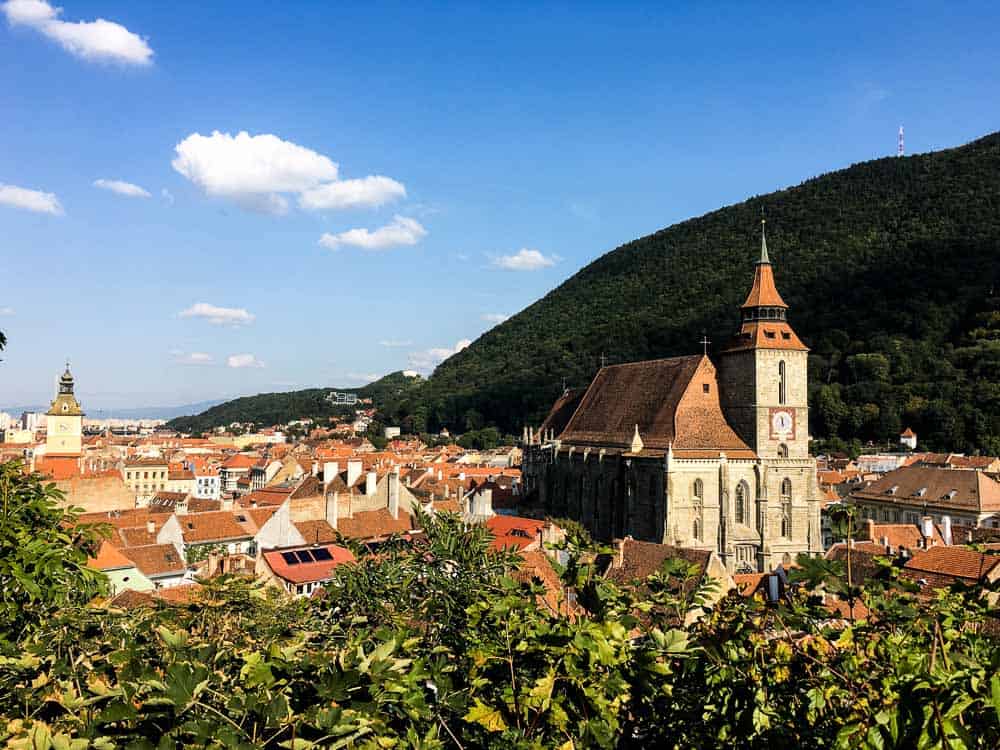
Brasov a charming and most visit city in Romania
Romania is Budget-friendly.
The currency of Romania is the Leu (Plural: Lei) and is literally unbreakable, given the fact that it consists primarily of plastic. Since the cost of living and wages here are so low, it might be difficult to break larger bills, especially in the mornings. If you need to get change for a larger bill, consider visiting a bank or restaurant, rather than a local shop.
When you arrive in the country, avoid using currency exchanges in the airports as they tend to target unsuspecting tourists. Instead, head towards an ATM or local bank, such as the local Banca Transilvania for better rates. As you venture into the countryside to villages, ATMs become harder to find and credit card payments non-existent. Make sure to carry plenty of leu with you.
As of September 2020, 1 Romanian Leu (RON) equates to 0.21 Euros.
Romania is more than Dracula
While one of the biggest tourists draws to Romania is courtesy of Bran Stoker’s “Dracula,” visitors should know that the country has so much more! It would be fair to say that Vlad the Impaler may be the most well-known Romanian internationally, but the people of Romania seem fairly ambivalent about this medieval Prince, outside of the draw he has on tourists.
To be quite honest, it makes sense. Vlad Tepes III (Stoker’s inspiration for “Dracula”) was not an incredibly successful or long-lasting ruler. Immortalized as a particularly dark super-human in pop culture and Hollywood, Vlad is best remembered in history for his particularly vicious approach to impaling his enemies, mainly the Ottomans, and less so as an effective ruler.
Most people making their way through Europe stop at the capital city of Bucharest and then head over to Bran Castle, completely bypassing the best parts of the country. And while Bucharest and Bran are certainly worth a visit, they’re not a full representation of the country as a whole.
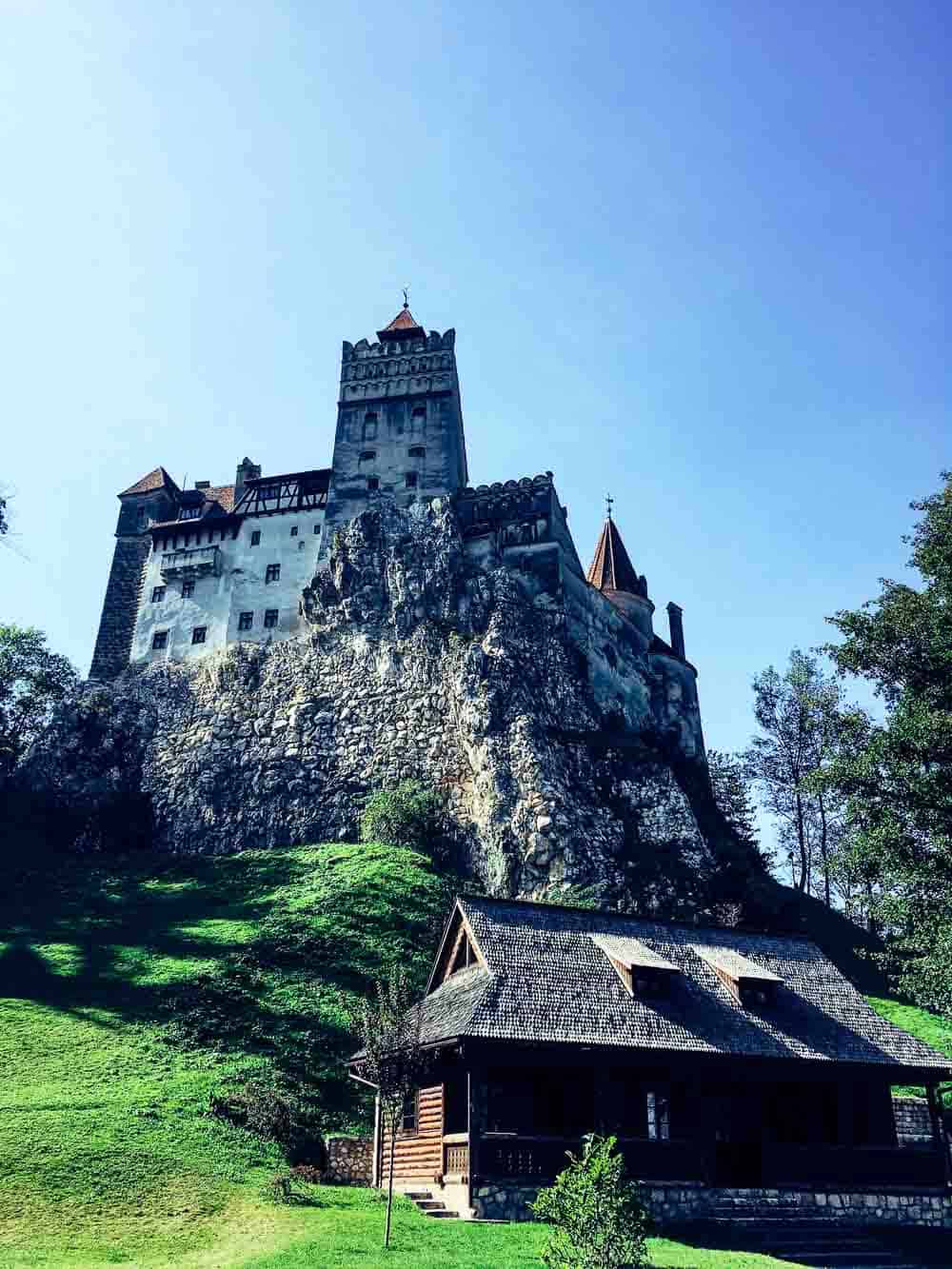
Bran Castle
In Bucharest, you can still see the lasting impact of its communist past, from bullet-ridden buildings to soviet-era block style apartments. In the medieval towns of Sibiu and Sighișoara, you can step back in time and see what life was like hundreds of years ago.
Even more different is the city of Oradea, a western city close to Hungary that boasts Baroque and Art Nouveau architecture that you can’t find elsewhere in the country.
Romania’s terrain is so varied; you’ll find a wildly different landscape depending on which part of the country you visit. The landscape of Romania is something out of a fairytale: rolling hills, towering snow-capped mountains, lush delta ecosystems, and even a beach along the Black sea. And with that magical landscape comes a history worthy of Game of Thrones…minus the dragons.
Driving in Romania Is Not For The Faint Of Heart
Taking a road trip through Romania is one of the best ways to experience the country, but is not for the faint of heart. Drivers are super intense and tend to treat the rules of the road as mere suggestions.
While the drivers in larger towns tend to be a little more aware of rules and courteous driving, you’ll find that the further away from the city centres you travel (i.e.: the countryside), the worse the driving becomes. Word to the wise – get plenty of insurance for your rental, just in case.
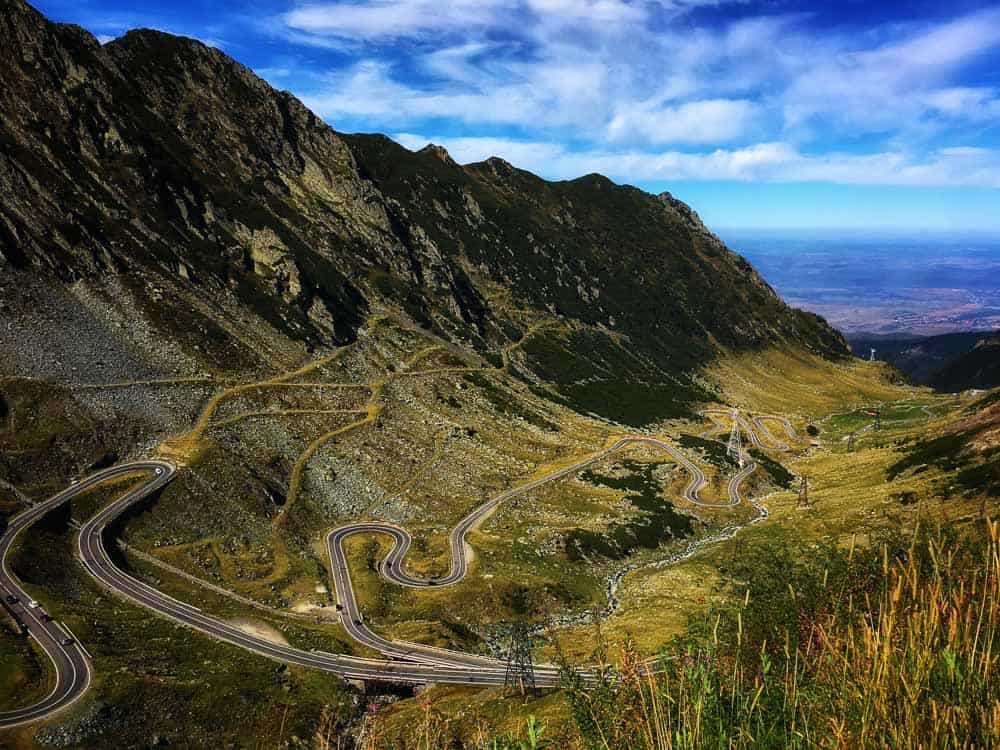
Transfagarasan Highway has often named the best road in the world.
If you choose to rent a car while in Romania, make sure that you’re comfortable driving manual transmission or be prepared to shell out almost double for an automatic. And you’ll want to take the time to read up on the local road signage if you’re not experienced with driving in Eastern Europe.
Traffic jams are also common in Romania, even in the most rural of villages. Although instead of cars piling up in the road, most of the rural traffic jams involve livestock, buggies, and mobile hay bales.
For more information on how to survive driving in Romania, check out this post here
Bucharest, Not Budapest
For years, visitors and celebrities have been confusing the capital cities of Romania and Hungary. Musicians such as Michael Jackson, Iron Maiden, Ozzy Osborne, and Metallica have all famously confused the two cities.
It got so bad that some Romanian-based companies started to advertise “Bucharest not Budapest” on their brands. While it might seem like a slip of the tongue, keep in mind how you would feel if your country’s capital city was often publicly mistaken for another country.
Romania Is Safe.
Romania is a safe destination to visit. There are no internal ethnic or religious conflicts, and the country also has a strict firearm regulation. Most of the civil disturbances here stem from a clash with the political class, but even then most of them are peaceful.
As with visiting any new place, exercising common sense, stay aware, and avoid wandering around alone at night in dark alleys. As a solo female traveller, there was never a point where I felt uncomfortable or worried as I road-tripped through the country.
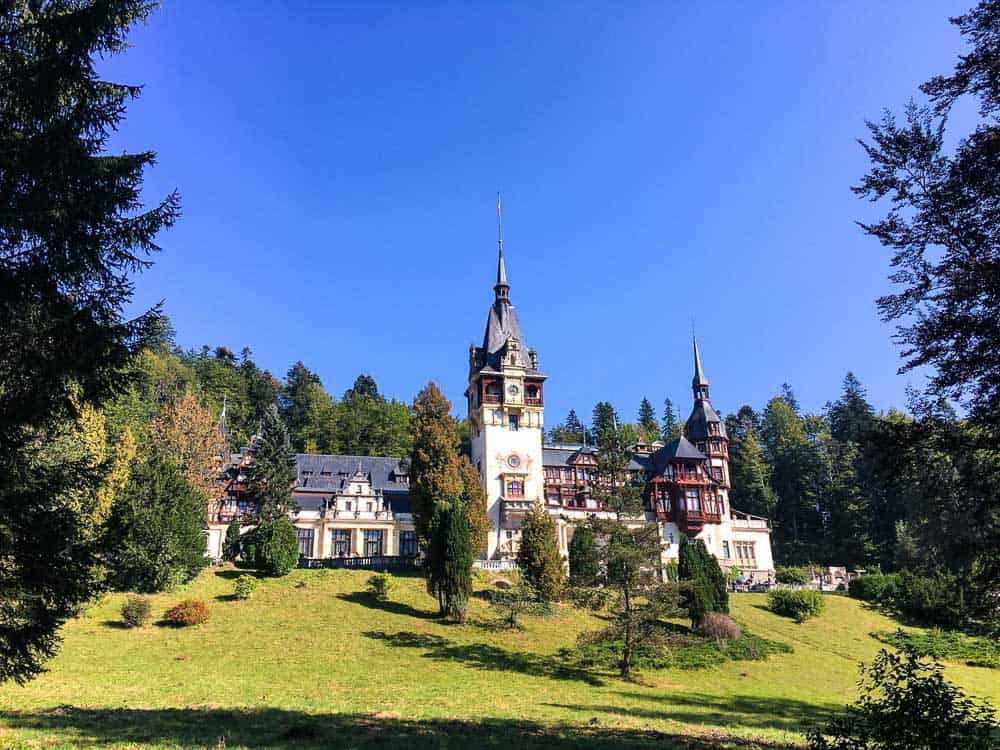
Pele´s castle in the central part of the country
Emergency Information
Obtaining help in Romania is as simple as dialling 112 on your phone. You’ll reach an operator that will ask if you need the police, fire services, or require medical assistance.
Most hospitals are public and state-owned and will take care of walk-ins and emergencies. There are also plenty of pharmacies in urban areas where you can get usual over-the-counter medication for colds, aches, and other smaller medical situations when a prescription isn’t necessary.
Romanian´s love Meat
Vegetarians and vegans, beware. Romanians love meat, and outside of the larger cities, it becomes a little more difficult to find a variety of non-meat options.
Although it is possible to eat a vegetarian diet, your options will become more restricting and limited as you venture away from more touristy areas. When in doubt, pizza is always a safe option if you don’t eat meat.
Tourism In Romania Is Still Growing
Within the last few decades, Romania has started to come into its own and become a hotspot for visitors and digital nomads. Even though Romania boasts some of the fastest internet speeds in the world, it is severely lacking in other areas.
Romania’s tourist and transportation infrastructure is still underdeveloped. And while this might be exciting for the more adventurous travellers, there aren’t many information centres for visitors in the bigger cities. Many of the medieval castles and historical attractions are challenging to get to unless you hire your own vehicle.
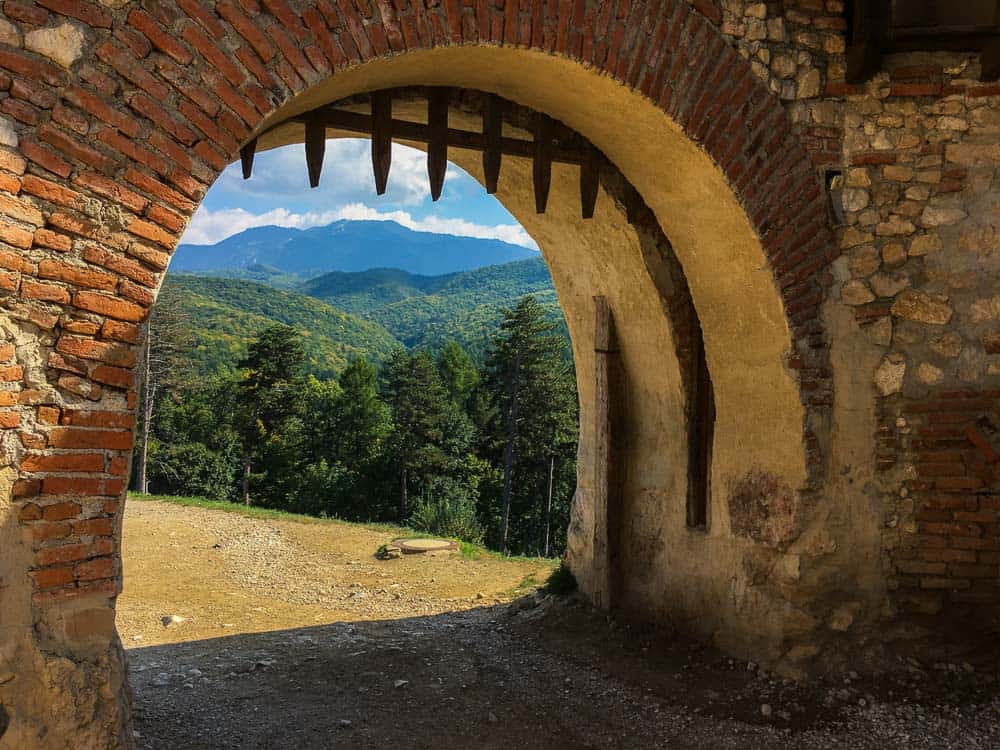
The entrance to Rasnov Fortress not far from Brasov
Romania Is Built For Slow Travel
Although Romania’s tourism infrastructure is still underdeveloped, that doesn’t mean travel is impossible. On the contrary – Romania is perfect for slow travel. Instead of breezing through the capital city of Bucharest in a day and then moving onto another country, spend a few days crawling through the winding streets and stopping into one of its numerous cafes for an afternoon or two.
Meander into the countryside where time seems to standstill. Stay in a local guest house and immerse yourself in the culture that might not survive the tourism revolution. Castle-hop your way through the country and learn more about the history that makes Romania so unique.
No matter how you travel to Romania, how much time you’re able to dedicate to this land of enchantment, or where you manage to visit, you’re guaranteed to have a memorable experience!
Author Bio:
Rachelle is the voice behind “Adventure is Never Far Away.” After travelling around the world and finally settling in Salt Lake City, Utah, USA, Rachelle is on a mission to prove that you can have adventures wherever you are. Remember that you never have to go far to have an adventure! Facebook Instagram YouTube
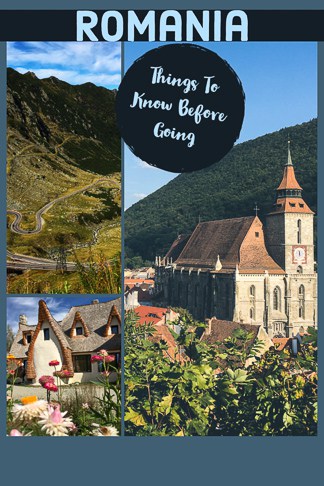
Things to know before Romania in Eastern Europe
